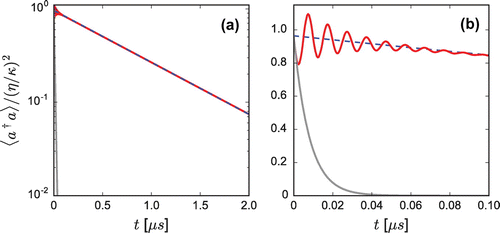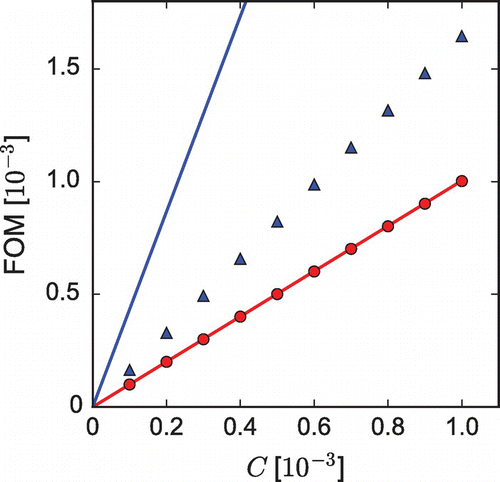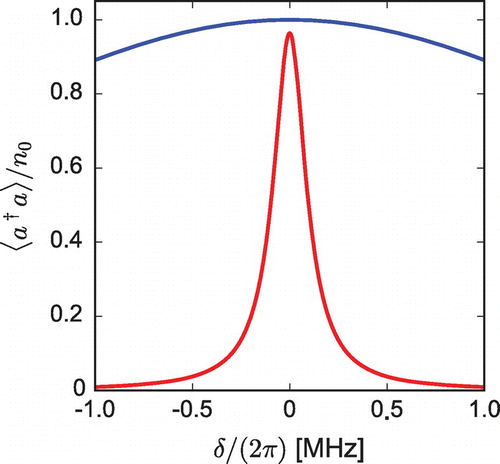Figures & data
Figure 1. Cavity spectrum with EIT. The normalized cavity photon number is plotted as a function of probe detuning. The solid red curve is the solution of the master equation, the dashed blue curve is the approximation from Equations (Equation3(3)
(3) ) and (Equation4
(4)
(4) ), and the grey curve is for the empty cavity. The parameters were
MHz,
, and
, as defined in the text. (a) full spectrum across all three normal modes. (b) central feature due to EIT.

Figure 2. Cavity ringdown with EIT. All parameters are the same as in Figure , with and
at time
. The red curve is the full solution of the master equation, the blue dashed curve is an exponential decay with rate given by Equation (Equation8
(8)
(8) ), and the grey curve is for an empty cavity. (a) Full ringdown trace (note the logarithmic scale). (b) Transient oscillation for early times.

Figure 3. Figure of merit for cavity ringdown, as a function of 2LA cooperativity. Red circles/blue triangles show FOM from Equation (Equation13(13)
(13) ) obtained from numerical simulations with/without the 3LA slow light, where simulated CRD signals were fit to exponential decays at long times, ignoring initial transients. The 3LA slow light effect used the parameters of Figures and . Solid lines are the predictions from Equation (Equation12
(12)
(12) ).


